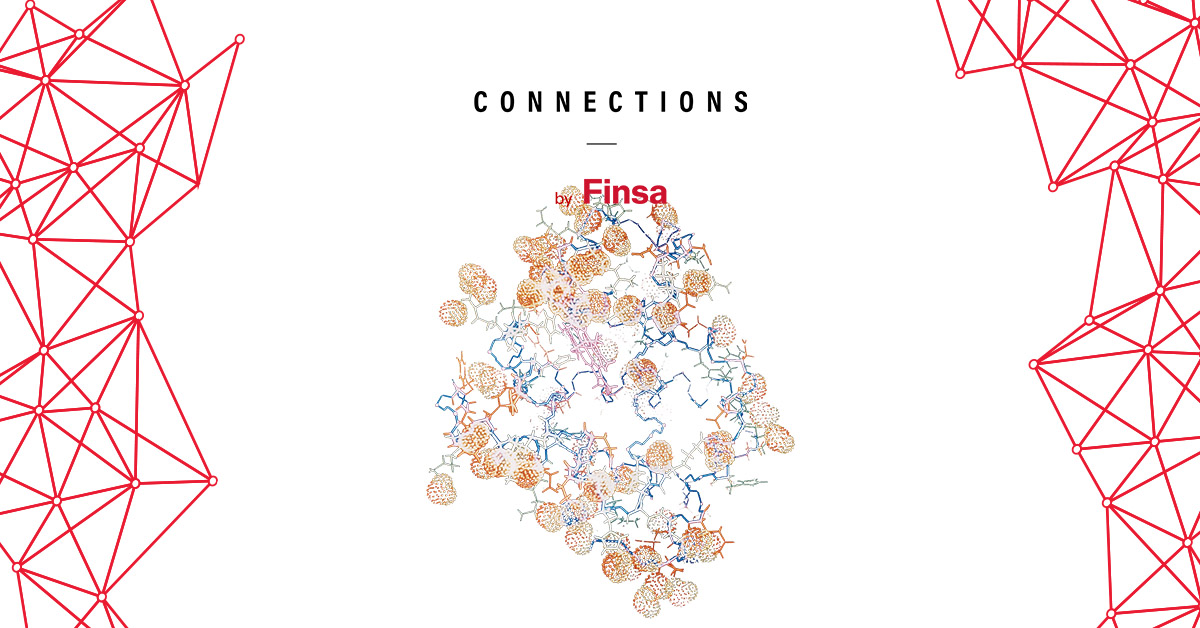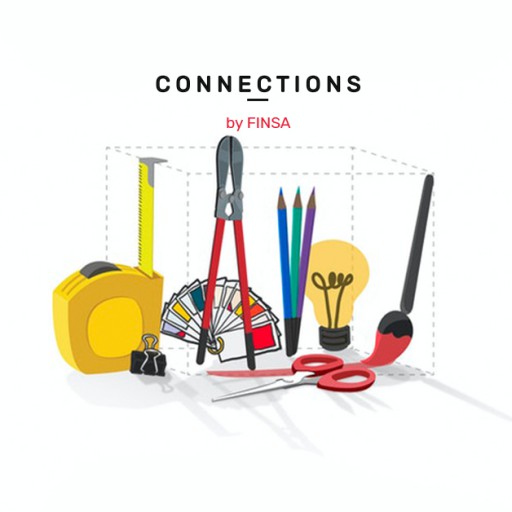The world of biomaterials – understood as those derived from biological sources, whether natural (wood or cork) or synthetic (laboratory-created, such as some polymers like bioplastics) – has become wider and more complex.
Their first and most recognised field of application is medicine, but the use of these resources has been gaining ground and they are now being used in construction, design and the aerospace industry.

More environmental awareness, new laws and technologies
The rapid progress made in recent years in the research and development of biomaterials can be explained by several reasons. There is “greater social awareness” (there is an increasing demand for materials that do not compromise the viability of the planet), says Santiago Nieto Mengotti, head of the Materioteca de Galicia, the Galician public library of materials, based in Ferrol, and there is also “more legislative pressure in the fight against climate change”.
The emergence of nanotechnologies and 3D printing has also boosted their development, as well as a better understanding of biology and chemical processes, which encourages, as Nieto Mengotti says, “more contributions from the field of research on processes for obtaining new biomaterials that are more stable, resistant and suitable for replacing other less sustainable materials”.
Ver esta publicación en Instagram
Customisable, biodegradable, safe, circular
Biomaterials have become increasingly visible for their unique properties to society as a whole and to a wide range of professionals in particular. They are sustainable and innovative. But what other values do they bring? Unai Etxebarria, director of Material ConneXion Bilbao, the consultancy in Spain with the largest archive of innovative and sustainable materials and manufacturing processes in the world, highlights four singularities. They are “highly customisable“, i.e. they can be modified to have specific properties such as strength, elasticity or biocompatibility, allowing manufacturers to adapt them to their needs.
A large proportion of them are biodegradable, capable of decomposing naturally after use, which is very important in sectors such as “medicine and construction”. They are also “safe for use in the human body”, making them suitable “in consumer products such as clothing and food”. And finally, they have a positive impact on the circular economy, “reducing the use of fossil waste and using natural resources more efficiently”.
Ver esta publicación en Instagram
Material libraries, a bridge between researchers and the market
For all these reasons, biomaterials are increasingly in demand by designers, architects, engineers and manufacturers, who are already using them to create more sophisticated and sustainable products. In this task, both digital and physical (professionals can see, touch and even smell each sample) material libraries play a very important role. “”We are meeting points for innovation and design,” says Etxebarria.”The tangible experience of the materials gives rise to inspiration and sensory evaluation,” he adds.
Ver esta publicación en Instagram
Transition to “bioarchitecture”.
Biomaterials innovation is also driving the transformation of architecture and construction, a sector responsible for 20-30% of greenhouse gas emissions, as well as generating a large waste stream.
“That is why the search for biomaterials as a less harmful alternative for the planet is a challenge for building”, says Zuriñe Iturbe, head of MATCOAM, the Building and Materials Gallery Department of the Madrid Architects’ Association. “Architecture professionals need to be kept up to date, through spaces such as ours, on the new alternatives available to them so that they can incorporate them into their projects. Our way of building is not going to change overnight, but it is important that solutions that are less harmful to the environment begin to be present in our architecture in order to become a much more sustainable sector,” she adds.
Ver esta publicación en Instagram
At the forefront of the “bioarchitecture” industry, we find materials derived from mycelium (a root-like structure or colony of fungi), microalgae o food scraps which, when mixed with other materials, become very useful composites, even for structural use. The HyFy Experimental Pavilion, MoMA’s courtyard, for example, is made of mycelium bricks: the fungi grew in just a few days in molds made from shredded corn stalks. On the other side of the Atlantic, in France, they have also experimented with bricks, but made from elephant dung. The result was the temporary installation The Elephant Theatre Pavillion, in Versailles:
Ver esta publicación en Instagram
Ver esta publicación en Instagram
Learning from the constructive past
However, as Zuriñe Iturbe points out, “the future will not only be marked by these more disruptive products. Today there are very interesting alternatives that come from our construction tradition and improve it through technology and industrialised processes”.
The architect highlights one in particular: wood, “the most widespread and popular biomaterial, already common in construction in central and northern European countries and increasingly used in Spain”. Wood, adds Iturbe, is natural, renewable, capable of absorbing CO2 from the atmosphere and is used “not only for more conventional solutions such as flooring, but also for acoustic conditioning or structural solutions that replace steel or concrete”.
But there are more traditional biomaterials. There is construction with raw earth, clay, straw, flax, bamboo or hemp, whose most innovative use is hempcrete, a new concrete based on conglomerates where conventional aggregates are replaced by this plant. The Hemp House (built in 2021 in Serbia) uses this biomaterial. “A great effort is being made to achieve ‘green concrete’, with natural or recycled elements,” says Iturbe. Another example is concrete that incorporates crushed mussel shells, which is lighter, has better thermal behaviour and is less permeable to water.
Ver esta publicación en Instagram
Domino effect in design
The world of design has not been indifferent to the negative effects of climate change and how it affects our lifestyle in this crisis. In fact, alternatives based on sustainability and creativity are multiplying everywhere, pointing to a progressive transformation of the sector.
In fashion, for example, a multitude of innovative fabrics have appeared, such as leather made from mushrooms or pineapple leaves, with natural cellulose or coffee fibres, or alginate yarns, a non-toxic, biodegradable, biocompatible, water-soluble and renewable biopolymer, usually extracted from brown algae. Another contribution is vegan bamboo leather, reminiscent of crocodile skin, developed by the Buenos Aires interior design studio Proyecto Menos es Más:
Ver esta publicación en Instagram
The textile industry has also found inspiration in frog skin. In France, thousands of tonnes of frog legs are consumed every year and someone thought about what to do with the skin, which is not eaten, and that perhaps tanning techniques could be applied to it. This is how frog leather was born, a biomaterial that some companies have already started to use to make watchstraps and other accessories.
Smoked salmon, which is also not eaten, is another leather with a promising future. Designers in northern Europe decided to transform it into leather and apply natural pigments to it. . It has already reached the fashion catwalks in the form of shoes and bags. In Spain, architect and designer Raquel Buj from Palencia experiments with craftsmanship, technology and sustainability through biofabrication. Like this dress made from mussels and silicone:
Ver esta publicación en Instagram
Innovative ideas also come from the furniture sector. María Mallo, a multidisciplinary architect, teacher and researcher from Madrid, creates, among many other things, lamps based on kombucha, a variety of black and green tea.
Honeylamp is a project by Benjamin Kaltenbach, from Bio Design Lab-HfG Karlsruhe (Germany), which also produces lamps, but with bee honeycombs. Other interesting and promising projects have emerged from this laboratory, which specialises in living or organic biomaterials, such as a textile made from orange waste, surfboards made from mycelium or chairs made from potato peel starch with vegetable fibres:
Ver esta publicación en Instagram
Ver esta publicación en Instagram
Ver esta publicación en Instagram
Ver esta publicación en Instagram
The challenges of biomaterials
Access to these new products is a major challenge. You can go to a shop and buy wood, but it is not yet possible to buy algae, polymers or mycelium, which also require a lot of energy to produce.
Logistics is another key element because no matter how environmentally friendly it is to use a material based on mussel shells, for example, it would not be sustainable to have to transport it from the coast to inland areas that probably also have interesting biomaterials much closer by. And producing them is generally not cheap. While we solve these challenges, let us continue to create in a sustainable way.


 (@proyectomenosesmas_estudio)
(@proyectomenosesmas_estudio)
